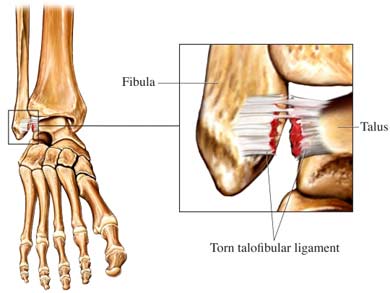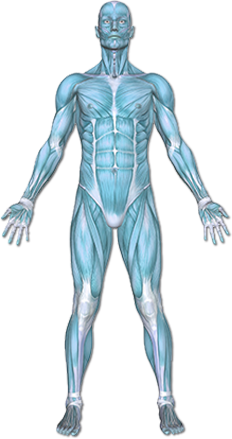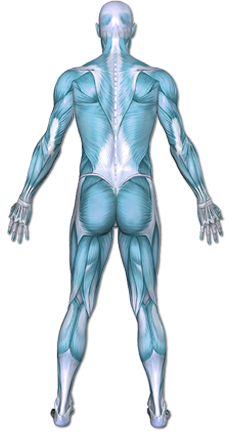Ankle Sprain
An ankle sprain is a partial or complete tear of the ligaments that support the ankle. Ligaments are strong bands of tissue that cross joints and connect bones to each other.


Copyright © Nucleus Medical Media, Inc.
This content was created using EBSCO’s Health Library
Ankle sprains may be caused by:
- Falling
- Sudden twisting of the ankle, such as:
- Stepping on an uneven surface or in a hole
- Taking an awkward step when running, jumping, or stepping up or down
- Having your ankle roll over when playing sports or ex ercising—called inversion of the foot
This content was created using EBSCO’s Health Library
Factors that increase your chance of getting an ankle sprain include:
- Playing sports especially with the wrong type of shoe
- Walking on uneven surfaces
- Weak ankles from a previous sprain
- Having:
- Poor coordination
- Poor balance
- Poor muscle strength and tight ligaments
- Loose joints
- Certain footwear (for example high heels)
This content was created using EBSCO’s Health Library
Symptoms of an ankle sprain may include:
- Pain, swelling, and bruising around the ankle
- Worsening of pain when walking, standing, pressing on the sore area, or moving the ankle inward
- An inability to move the ankle joint without pain
- A popping or tearing sound at the time of the injury (possibly)
This content was created using EBSCO’s Health Library
An ankle sprain may not require a visit to the doctor. However, you should call your doctor if you have any of the following:
- Inability to move the ankle without significant pain
- Inability to put any weight on that foot
- Significant swelling or bruising
- Pain over a bony part of your foot or ankle
- Pain that interferes significantly with walking
- Pain not relieved by ice, pain relief medication, and elevation
- Numbness in the leg, foot, or ankle
- Pain that does not improve in 5-7 days
- Uncertainty about the severity of the injury
- Uncertainty about how to care for this injury
The doctor will ask about the symptoms and how the injury occurred. An examination of your ankle will be done to assess the injury. Images may need to be taken of your ankle. This can be done with:
- X-rays
- MRI
Ankle sprains are graded according to the damage to the ligaments. The more ligaments involved, the more severe the injury.
Grade 1
- Some minor tearing of ligament tissue
- Ankle remains stable
Grade 2
- Partial tearing of ligament tissue
- Mild instability of the joint
- Usually involves damage to 2 ankle ligaments
Grade 3
- Complete tearing of 2 or 3 of the ligaments
- Significant instability of the joint
This content was created using EBSCO’s Health Library
Physical therapy intervention is the standard for treatment of ankle sprains. Treatment for the acute ankle sprain is based primarily upon the RICE principles: Rest, Ice, Compression and Elevation. This is followed quickly by a program of exercises and functional training to reduce the likelihood of chronic ankle instability. Balance and “proprioceptive” training are critical components of the rehabilitation process. In the case of a severe sprain and subsequent chronic instability, surgical intervention may be indicated. This is especially true in the case of younger, high-functioning individuals. This is another reason that early physical therapy intervention is very important.
This content was created using EBSCO’s Health Library
Many ankle sprains cannot be prevented. However, you can reduce your risk of spraining an ankle:
- Take a break from sports or exercise when you feel tired.
- Do exercises that strengthen leg and foot muscles.
- Learn the proper technique for exercise and sporting activities. This will decrease stress on all your muscles, ligaments, and tendons, including those around your ankle.
- If you have injured your ankle before, you are more likely to injure it again. You may reduce your risk of repeated sprains by wearing an ankle brace.
- Wear appropriate footwear when playing sports to avoid injury.
This content was created using EBSCO’s Health Library
This content was created using EBSCO’s Health Library


